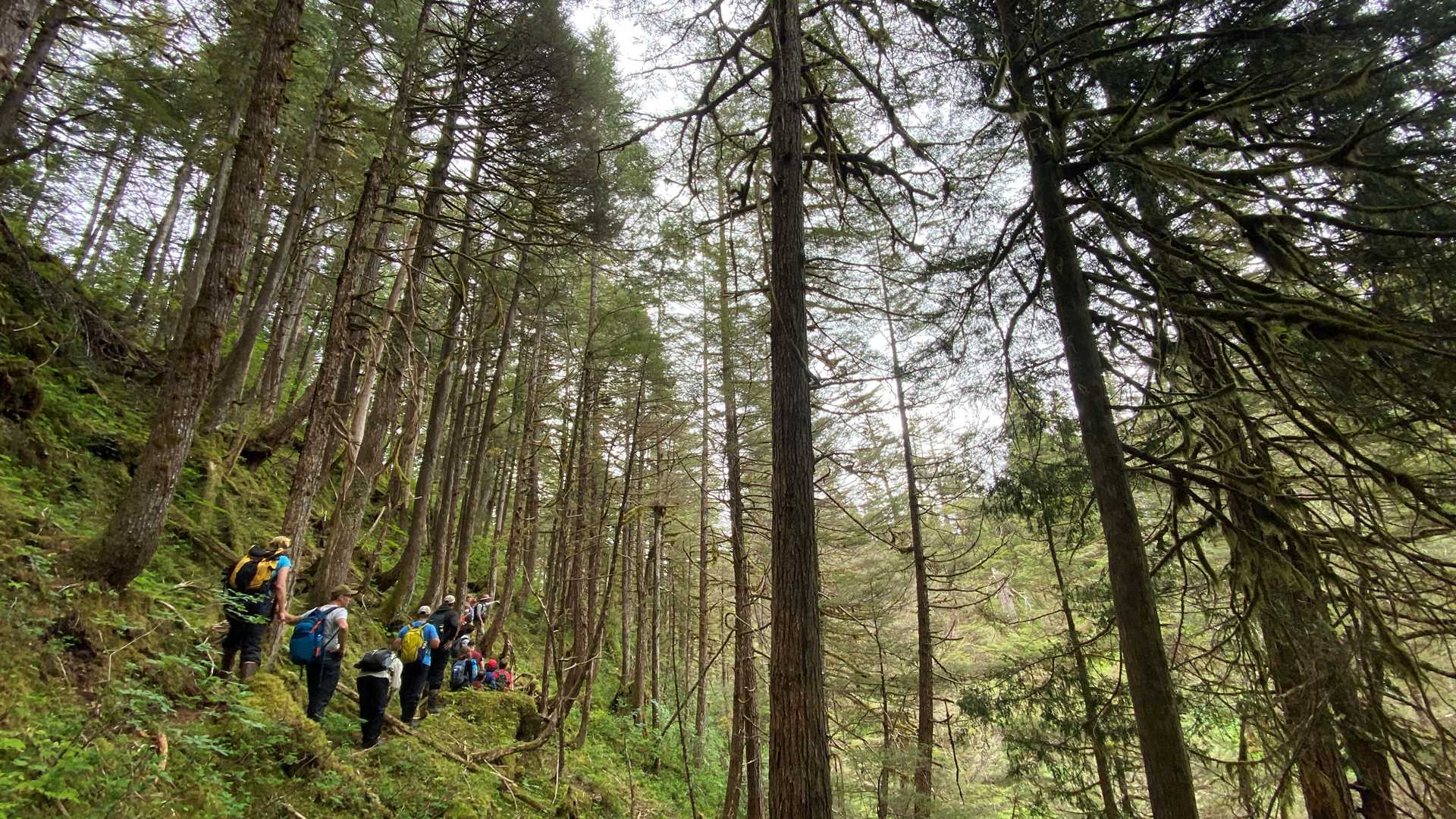In Alaska, the end of summer comes quickly. Almost immediately after the long days around the solstice, snow begins to pile up on the highest peaks, the iconic flowers of the fireweed stop flowering, and berries begin to emerge. Most importantly, the salmon run to their natal streams, bringing the predators of the rainforest down to the edges. We spent a full day exploring this seasonality in Kelp Bay, a group of three arms along the northeastern edge of Baranof Island.
As we anchored in the early morning, a humpback whale surfaced just off the stern of National Geographic Quest, signaling a spectacular day ahead. The first group ashore began on an all-day bushwhack. Hikers had the opportunity to follow game trails through multiple ecosystems, including the intertidal zone, the temperate rainforest, and the Alaskan muskeg over the course of six hours. While they disappeared into the dense brush, other groups took to kayaks and intertidal hikes to search for signs of bears along the bay’s bustling salmon stream. Almost immediately, multiple bears made their way out on a hunt for food. At times, as many as five different bears prowled the stream, including a mother and three cubs. Once we boarded and joined together again, everyone was ecstatic to share their experiences of the late Alaskan summer over cocktails on the sundeck. We began our sail south towards Petersburg with whales in all directions during dinner and a rising full moon as we went to bed.
Summer in Alaska doesn’t get much better.
Photo caption and photographer: Sitka spruce and western hemlock tower over guests in the temperate rainforest of Kelp Bay. Photo by Alex Krowiak







